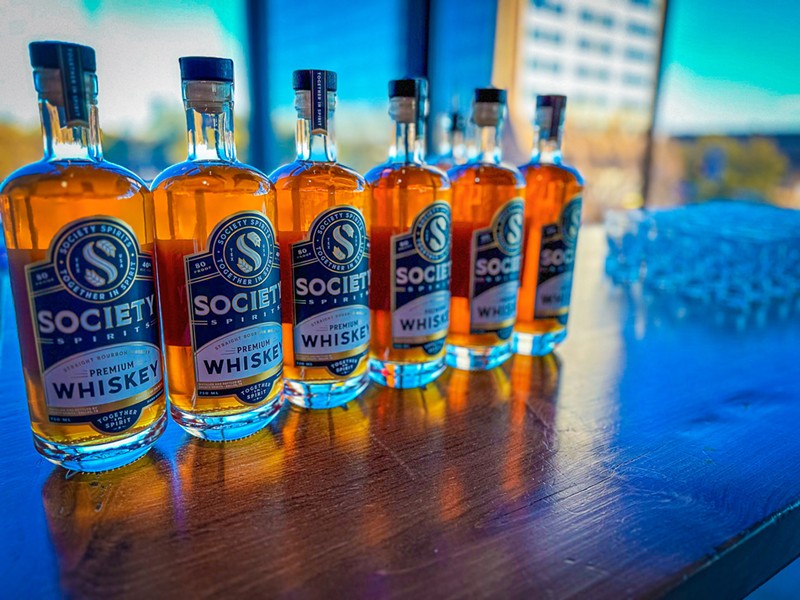Distillery Characteristics Introduced: a Journey Through the Scientific Research and Art of Spirits Production
As the drapes are withdrawed on the intricate world of distillery dynamics, an interesting world emerges where science and art merge to produce the spirits we savor. Behind the closed doors of distilleries lie tricks waiting to be unraveled, from the careful chemistry of purification to the fragile dancing of yeast in fermentation. The marriage of tradition and technology in spirits production reveals a tapestry woven with strings of workmanship and technological innovations. Join us on a journey through the heart of distillation, where each decrease of spirit informs a tale of knowledge and enthusiasm, assuring a deeper understanding of the alchemy that transforms grains and fruits right into the fluid gold we raise in a toast.
The Chemistry of Distillation
The chemistry of purification, a fundamental process in the manufacturing of spirits, entails the separation of parts based on their various boiling points. This distilled liquid, recognized as the "heart cut," includes the wanted alcohol content and taste compounds.
During purification, three primary fractions are acquired: the "heads," which have volatile substances and higher alcohols that can be unsafe if eaten in large quantities; the "hearts," the valued portion with the wanted ethanol and flavor profile; and the "tails," which include heavier substances and fusel alcohols. Proficient distillers must carefully check the temperature and circulation prices to separate these portions efficiently, making certain a high-quality last item. The chemistry of distillation is a fragile interplay of warm, evaporation, and condensation that transforms an easy fluid mix right into a complex and improved spirit.
Artisanal Craftsmanship in Spirits Making
Amidst the globe of spirits manufacturing, artisanal craftsmanship plays an essential role in boosting the top quality and character of distilled drinks (Galveston Liquor). Artisanal craft distillers concentrate on small, hands-on manufacturing approaches, commonly making use of traditional techniques that have actually been passed down through generations. These devoted artisans and females prioritize quality over quantity, paying meticulous interest to every action of the distillation procedure
Artisanal craftsmanship in spirits making involves a deep understanding of the raw products used, such as grains, botanicals, or fruits, and exactly how their characteristics influence the end product. From selecting the finest ingredients to very carefully monitoring aging, fermentation, and purification, craftsmens instill their spirits with passion and know-how.
In addition, artisanal craft distillers usually welcome trial and error and innovation, pushing the limits of traditional spirits production. They might introduce distinct flavor accounts by integrating in your area sourced components or utilizing creative aging methods. This dedication to imagination and excellence cause spirits that are not only of exceptional top quality but additionally display the creativity and originality of the distiller.
Innovations in Aging Methods

One famous advancement getting traction is the usage of smaller sized barrels for aging spirits. By raising the surface area area-to-volume proportion, smaller sized barrels pass on flavors more quickly, leading to a much more intense maturation process. This technique is specifically preferred among craft distillers looking for to create top quality spirits in a much shorter timeframe.
Additionally, distillers are progressively turning to alternative wood types, such as cherry or acacia, to present distinct tastes to their aged spirits. These unusual woods supply a distinct try this website taste account, setting their items apart in an affordable market.
Furthermore, advancements in modern technology have made it possible for distillers to check out sped up maturing techniques, such as ultrasound or temperature level and pressure variants. These techniques enable for specific control over the aging process, causing innovative taste accounts that push the borders of conventional spirits production.

The Function of Yeast in Fermentation
An important element of the fermentation procedure in distilling is the duty played by yeast. Yeast, a single-celled bacterium, is critical in converting sugars right into alcohol and carbon dioxide throughout fermentation. In the context of distilling spirits, yeast plays a pivotal function in the production of ethanol, which is the key alcohol in a lot of alcoholic drinks.
Yeast attains this with the procedure of anaerobic respiration, where it metabolizes sugars such as sugar and fructose right into ethanol and co2. Various stress of yeast can give one-of-a-kind flavors and aromas to the last spirit, adding to the intricacy and character of the distilled product. Distillers very carefully choose yeast strains based upon their wanted taste account and fermentation features.
The fermentation process can last anywhere from a few days to a few weeks, relying on aspects such as yeast sugar, pressure, and temperature level content. Monitoring and managing the fermentation procedure are vital to ensure ideal yeast activity and alcohol manufacturing. Generally, yeast is a basic gamer in the alchemical change of raw ingredients into the spirited potions appreciated by customers worldwide.
Sustainable Practices in Distilleries
In the contemporary distilling sector, applying lasting practices has come to be a pressing top priority for distilleries looking for to minimize their ecological effect and make sure long-term practicality. Distilleries are significantly acknowledging the relevance of adopting environmentally friendly procedures throughout the production process. One essential aspect of sustainability in distilleries is water conservation. Distilleries require significant amounts of water for different stages of manufacturing, and implementing water recycling systems or using rainwater harvesting techniques can dramatically reduce water use and decrease the distillery's general environmental impact.
In addition, sustainable power sources are obtaining grip in the distilling globe. Lots of distilleries are purchasing renewable resource technologies such as photovoltaic panels or biomass central heating boilers to decrease dependence on non-renewable power resources and reduced greenhouse gas emissions. Additionally, waste administration methods play a vital duty in sustainable distillery operations. Distilleries are checking out ingenious means to repurpose byproducts such as invested grains or distillation deposits, turning waste right into resources find out with techniques like animal feed manufacturing or composting. By embracing sustainable methods, distilleries can not only reduce their ecological why not try this out effect yet also attract ecologically mindful customers and contribute to an extra lasting future for the sector.
Conclusion
To conclude, the complex dynamics of distillery operations involve a combination of clinical concepts and creative workmanship. From the chemistry of distillation to the duty of yeast in fermentation, distilleries are regularly introducing and experimenting to develop top quality spirits. By integrating lasting practices and embracing new aging techniques, distilleries are shaping the future of the sector. The blend of custom and innovation in spirits production highlights the intricacy and imagination associated with this ancient craft.
As the curtains are attracted back on the intricate world of distillery dynamics, an interesting realm emerges where science and art merge to produce the spirits we relish.The chemistry of distillation, a basic procedure in the production of spirits, includes the separation of parts based on their different boiling points.Moreover, artisanal craft distillers usually accept trial and error and innovation, pushing the limits of typical spirits production. In the context of distilling spirits, yeast plays an essential duty in the production of ethanol, which is the primary alcohol in most alcoholic drinks.
From the chemistry of distillation to the function of yeast in fermentation, distilleries are constantly trying out and innovating to produce top quality spirits.
Comments on “Experience the Rich Flavor of Galveston Whiskey: Local Specialties”